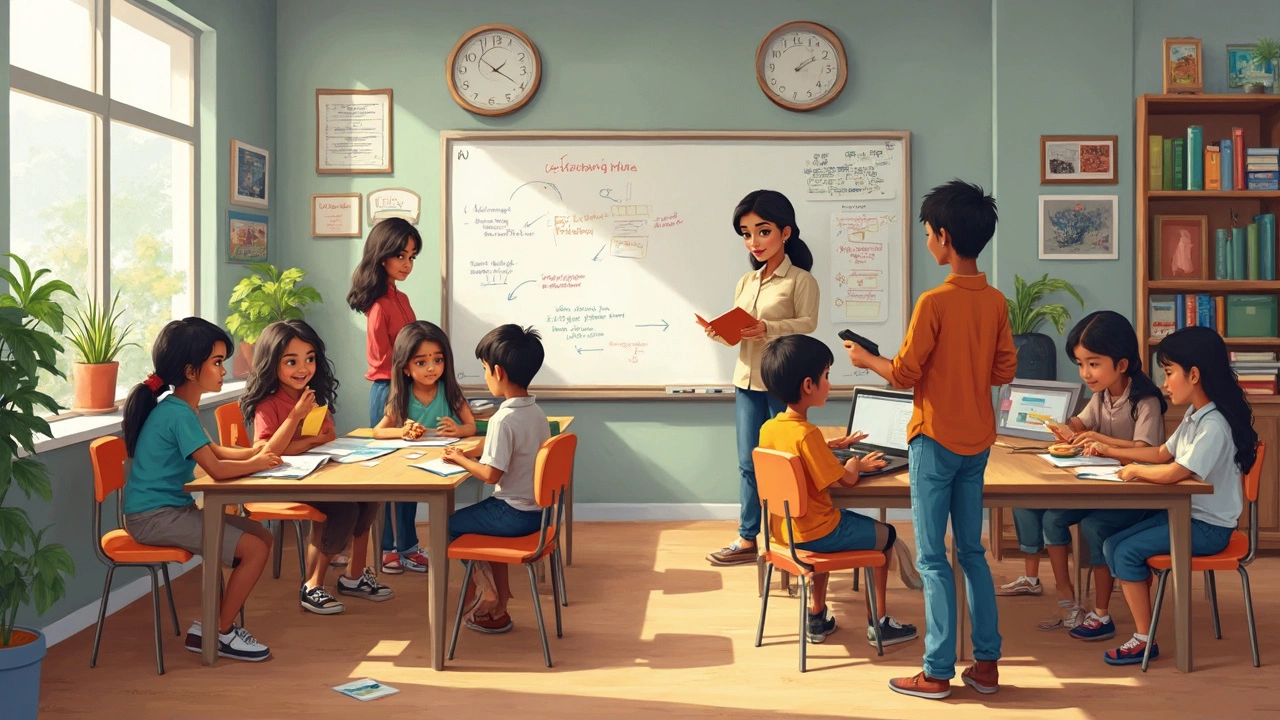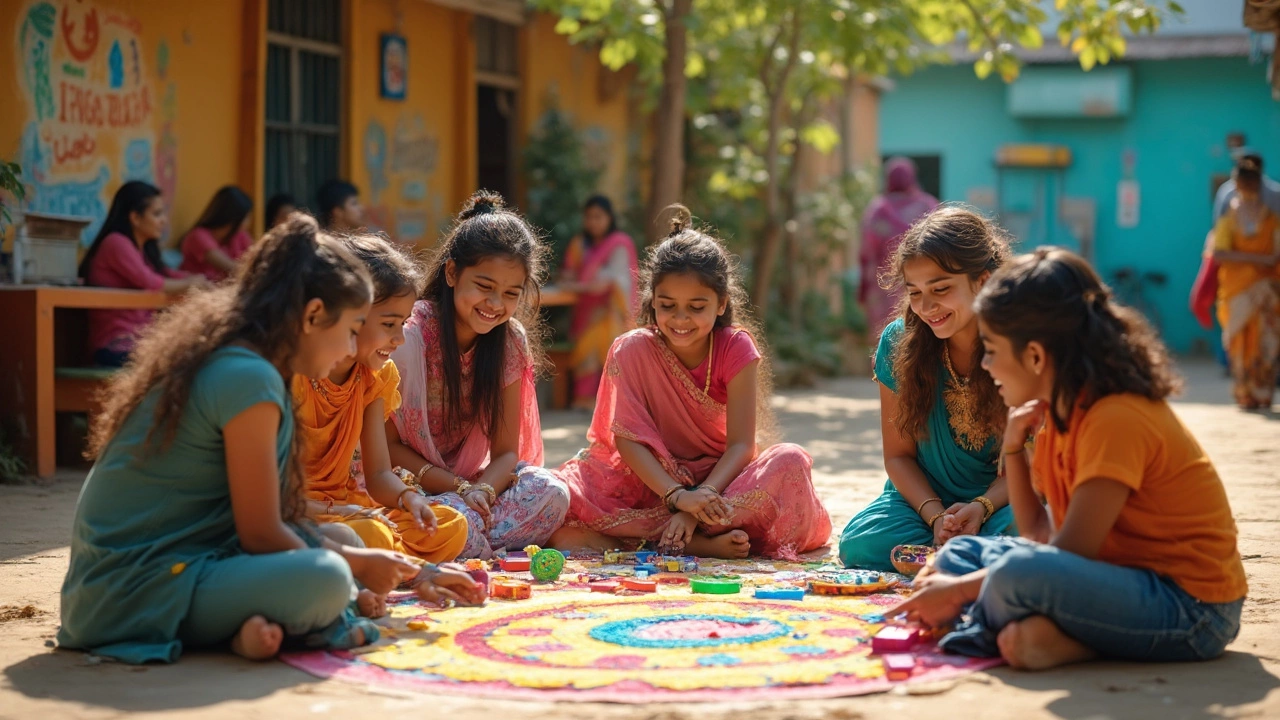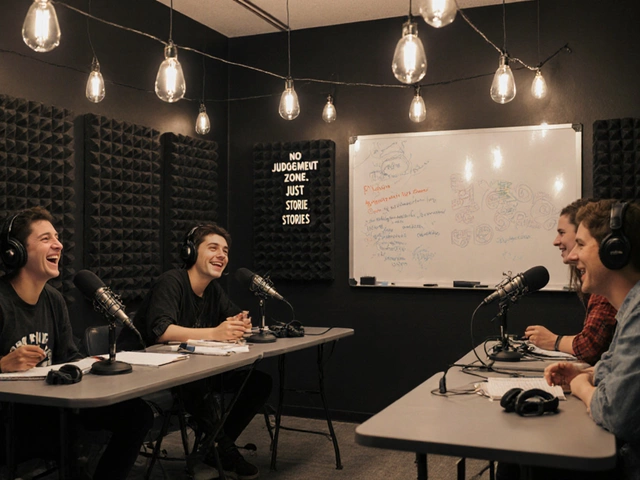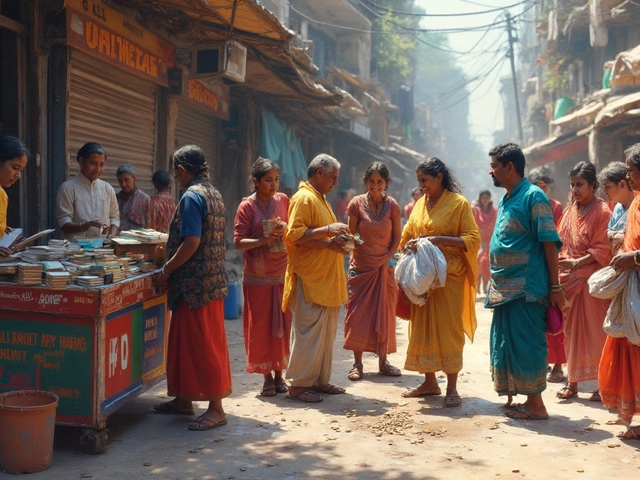Kids and teens crave more than just school and homework—they need safe spaces to grow into confident, capable adults. That’s where the 9 centers of youth development come in. Think of them like a blueprint for helping young people figure out who they are, what they want, and how to build a solid life foundation.
These centers aren’t physical places; they’re the main areas youth programs should cover. They help youth organizations focus on what really matters, from emotional support to big-picture life skills. If you’re working with kids, volunteering, or just want your child to thrive, knowing these centers makes a real difference. You’ll spot what’s missing in current programs, or get ideas to make youth groups more effective. Stick around, and you’ll pick up practical tips that actually make an impact on young lives.
- What Are the 9 Centers of Youth Development?
- Inside the Emotional Wellness Center
- Social Connections and Belonging
- Learning and Education Matters
- Health, Sports, and Physical Activity
- Building Skills for Real Life
What Are the 9 Centers of Youth Development?
If you've ever wondered what really helps kids thrive, experts say it boils down to nine main focus areas. These aren’t just theories; they guide real-world youth programs everywhere from community clubs to national organizations. Here’s the breakdown of what they cover:
- Emotional Wellness: Coping with stress, feeling understood, and building confidence are at the top here. Good programs include trusted adults for kids to talk to and safe ways to process feelings.
- Social Connections: Finding a sense of belonging, teamwork, and making healthy friendships. This is the glue that keeps kids returning to positive environments.
- Education and Learning: Going beyond grades. This center builds practical knowledge, sparks curiosity, and helps kids see learning as something useful outside of school walls.
- Physical Health and Activity: This is about sports, healthy routines, and learning how to look after your own body—especially important as screen time rises every year.
- Life Skills: Budgeting, cooking, managing time, and other hands-on stuff that makes adulting easier down the road.
- Leadership and Responsibility: Opportunities for kids to step up, organize activities, and see the results of their actions.
- Civic Engagement: Helping kids see they’re part of a bigger community—maybe through service projects or learning about voting.
- Cultural Awareness: Understanding different backgrounds, respecting all kinds of people, and being open to new experiences.
- Creativity and Expression: Whether it’s music, art, drama, or just new ways to solve problems, this center helps brains stretch and grow.
Most strong youth development programs aim to touch all these areas, because it turns out none of them stand alone—emotional smarts, for example, make teamwork and leadership go smoother, and a sense of belonging can drive kids to care more in school or service projects.
Looking for proof these areas work? Here’s a quick snapshot of findings from a national youth survey in 2024:
| Development Center | % with Access in Programs | Link to Positive Outcomes |
|---|---|---|
| Emotional Wellness | 68% | 27% less dropout risk |
| Social Connections | 77% | Less reported loneliness |
| Physical Health | 54% | Lower obesity rates |
So if you’re setting up a youth program—or just checking whether one is right for your kid—use this list as your cheat sheet. The best groups don’t just focus on one thing; they mix and match these centers for maximum impact. If you notice one is missing, it’s probably worth asking about!
Inside the Emotional Wellness Center
The heart of youth development starts with emotional wellness. This is more than just talking about feelings—it’s about helping young people build habits and mindsets that keep them steady when life throws curveballs. In fact, studies show that kids with strong emotional wellness are more likely to succeed in school, avoid risky behavior, and build healthy relationships as adults.
Youth centers and organizations have a direct role in this by making sure kids feel safe, heard, and valued. Emotional wellness covers things like self-esteem, resilience, recognizing emotions, and managing stress or anxiety. When these needs are met, youth are more open to learning and growing in other areas.
Real-world results back this up. Programs known for prioritizing mental health and emotional wellness report fewer discipline problems and higher reports of happy, engaged participants. One national U.S. survey found that youth organizations offering regular check-ins and guided group discussions lowered reports of bullying by 28% in a single school year.
| Benefit | Programs Prioritizing Emotional Wellness | Programs Not Focusing on It |
|---|---|---|
| Reported Bullying Incidents | 12% | 40% |
| School Engagement | 81% | 59% |
| Drop in Absenteeism | 23% | 8% |
So, what does real support look like inside an emotional wellness center? Here’s what works best:
- Facilitated discussions where everyone gets a chance to talk, not just the loudest kids.
- Teaching basic coping skills like deep breathing, journaling, or even just naming emotions out loud.
- Bringing in adults who act more like mentors than strict teachers—someone teens actually trust.
- Inviting guest speakers or using short mental health workshops to break down tough topics like anxiety, peer pressure, or anger.
If you’re looking for a quick place to start, just making time for regular group check-ins or building a "How’s your week going?" routine does wonders. Don’t overlook simple ideas—sometimes, just sharing stories creates the youth development magic. The emotional wellness center is where confidence and kindness get built for life.
Social Connections and Belonging
Every young person needs to feel like they fit in somewhere. This isn’t just about having friends. It’s about finding a group, club, or team that welcomes you with open arms and actually values what you bring to the table. Youth organizations that make this a priority see better attendance, higher motivation, and even better mental health in their members.
Research shows that social connection is powerful. According to a 2023 study at the Search Institute, kids who feel they belong to a group are over twice as likely to say they have hope for the future. When youth feel left out, they’re more likely to skip programs, drop out, or even deal with stress and anxiety.
Building belonging doesn’t mean forcing everyone to get along. It’s about creating moments where every voice can be heard, and no one has to worry about being judged. It works best when leaders encourage teamwork, run group projects, and mix up activities so everyone has a shot to shine.
- Set up small groups right from the start so new kids can get to know each other fast.
- Use icebreakers and simple games—not every activity has to be about winning, more about building trust.
- Let youth run some group meetings or lead parts of events—it gives them a sense of ownership.
- Celebrate little wins together; maybe it’s a shared pizza night or just a group photo wall.
Don’t underestimate small gestures, either. Leaders remembering names and asking questions can make youth feel seen. Sometimes just one strong connection—be it with a peer or an adult leader—can change a young person’s experience for the better. In every solid youth development plan, genuine belonging is non-negotiable.

Learning and Education Matters
When it comes to youth development, learning isn’t just about memorizing facts for a test. It’s about building skills that last, tapping into curiosity, and prepping kids and teens for what’s next—jobs, college, or just everyday problem-solving. Youth development programs that focus on learning do a lot better at keeping young people engaged and helping them set real goals.
Research shows that young people involved in afterschool learning programs are way more likely to finish high school. In the U.S., the Afterschool Alliance found that students in these programs attend school more often and get higher grades than those left on their own after school hours.
Good youth organizations make education hands-on and fun. They mix up reading, science, arts, and even tech. Some programs bring in local careers so teens can actually see how their studies connect to real work, making learning way more meaningful.
- Offer homework help, but don’t stop there—include robotics, music, debate, and creative writing too.
- Encourage project-based learning. Let teens pick topics they care about and run with it. This boosts independence and self-confidence.
- Bring in mentors from the community, like local engineers, artists, or health workers, to show real-world possibilities.
If you’re running a youth group or looking to join one, ask about these learning opportunities. The best programs show growth not just with grades but in building self-motivation and curiosity.
| Learning Area | How It Helps Youth |
|---|---|
| STEM Activities | Improves problem-solving and tech skills needed in most jobs today |
| Arts and Music | Boosts creativity and emotional expression |
| Literacy Groups | Strengthens communication and critical thinking |
| Career Exploration | Makes learning practical and helps set real goals |
Real education in youth organizations is about seeing learning as a lifetime deal, not just something to survive in school. The right programs make kids want to learn more, not less.
Health, Sports, and Physical Activity
Physical activity does more than just keep teens in shape. It’s a core part of youth development that touches every part of a young person’s life, from self-confidence to better grades. The World Health Organization recommends at least 60 minutes of moderate to vigorous activity daily for kids and teens. That doesn’t mean just running laps; it includes skateboarding, swimming, dancing, or any fun activity that gets them moving.
Organized sports teach more than how to win. Teamwork, leadership, setting goals, and dealing with setbacks all come from being part of a group that plays together. Studies consistently find that kids involved in sports are less likely to drop out of school and more likely to stick to healthy habits as adults.
Many youth organizations miss the mark by focusing only on competition or physical skills. The real win is creating welcoming spaces where everyone can try something new, no matter their skill level. If your program only offers soccer or basketball, why not add yoga, hiking, or group workouts? Here’s what strong physical activity looks like in a youth development program:
- Regular opportunities for all youth to get moving, not just the athletes
- Safe spaces and clear guidelines to help everyone feel comfortable and included
- Variety in activities to reach kids with different interests: think dance, martial arts, rock climbing, or cycling
- Learning about health beyond exercise—covering nutrition, sleep, and body image in honest, non-judgmental ways
Physical well-being builds the foundation for personal growth. It’s easier for young people to build confidence, make friends, and tackle stress when they feel strong and healthy. If you care about youth development, don’t let the physical side be an afterthought—it belongs right at the center of your plans.
Building Skills for Real Life
This is where things get real—teaching youth the practical stuff they’ll actually use outside school. Youth organizations that focus here give teens and kids a major head start. That’s everything from managing money, to landing jobs, to tracking goals. Even simple stuff like cooking a meal or fixing a bike makes a difference.
The youth development field agrees that hands-on skills top the list of what young people need most. The National Collaboration for Youth puts it bluntly:
“Young people thrive when they see their own progress and gain skills that matter in the real world, not just on paper.”
So, what are the hot skills? Check out a few non-negotiables:
- Personal finance (budgeting, saving, using credit wisely)
- Resume writing and job interviews
- Problem-solving and decision-making
- Basic cooking and healthy eating habits
- Time management and setting realistic goals
- Clear communication, online and offline
- Using technology safely and smartly
Here's a quick look at what skills youth programs prioritize, based on a 2024 survey of top U.S. youth organizations:
| Skill Area | % of Programs Teaching It |
|---|---|
| Financial Literacy | 78% |
| Job Readiness | 88% |
| Health & Wellness | 81% |
| Digital Safety | 69% |
Want tips for making these skills stick? Keep it hands-on. Don’t just talk about writing a resume—have kids make their own. Instead of lecturing about healthy meals, cook together. Role-play job interviews and let teens steer their own projects. It’s way more fun, and it actually works.
The best youth development programs show young people how these skills connect to independence and their future plans. If you spot an organization putting real-life skills front and center, you know they’re setting up kids to win outside the classroom.






